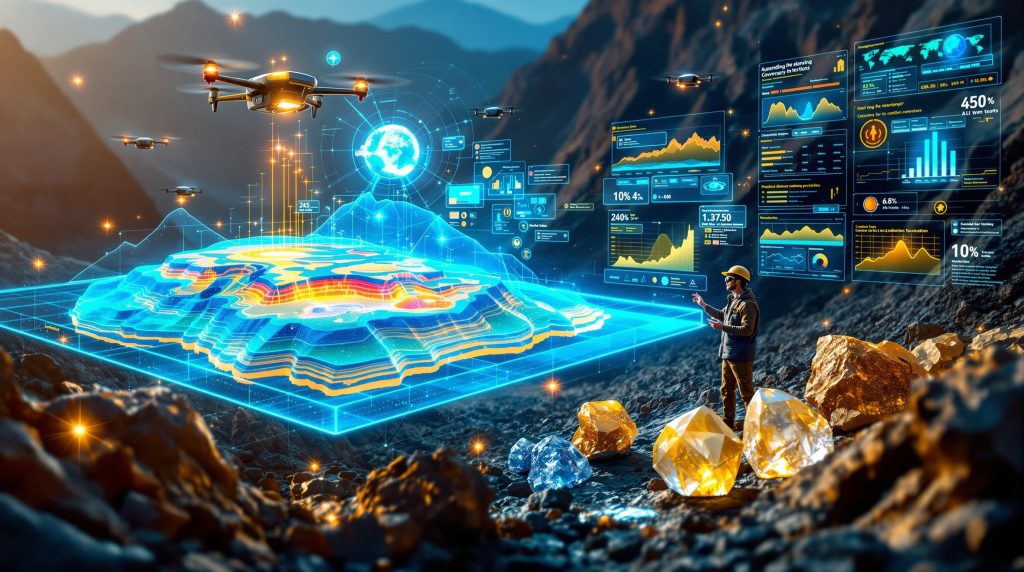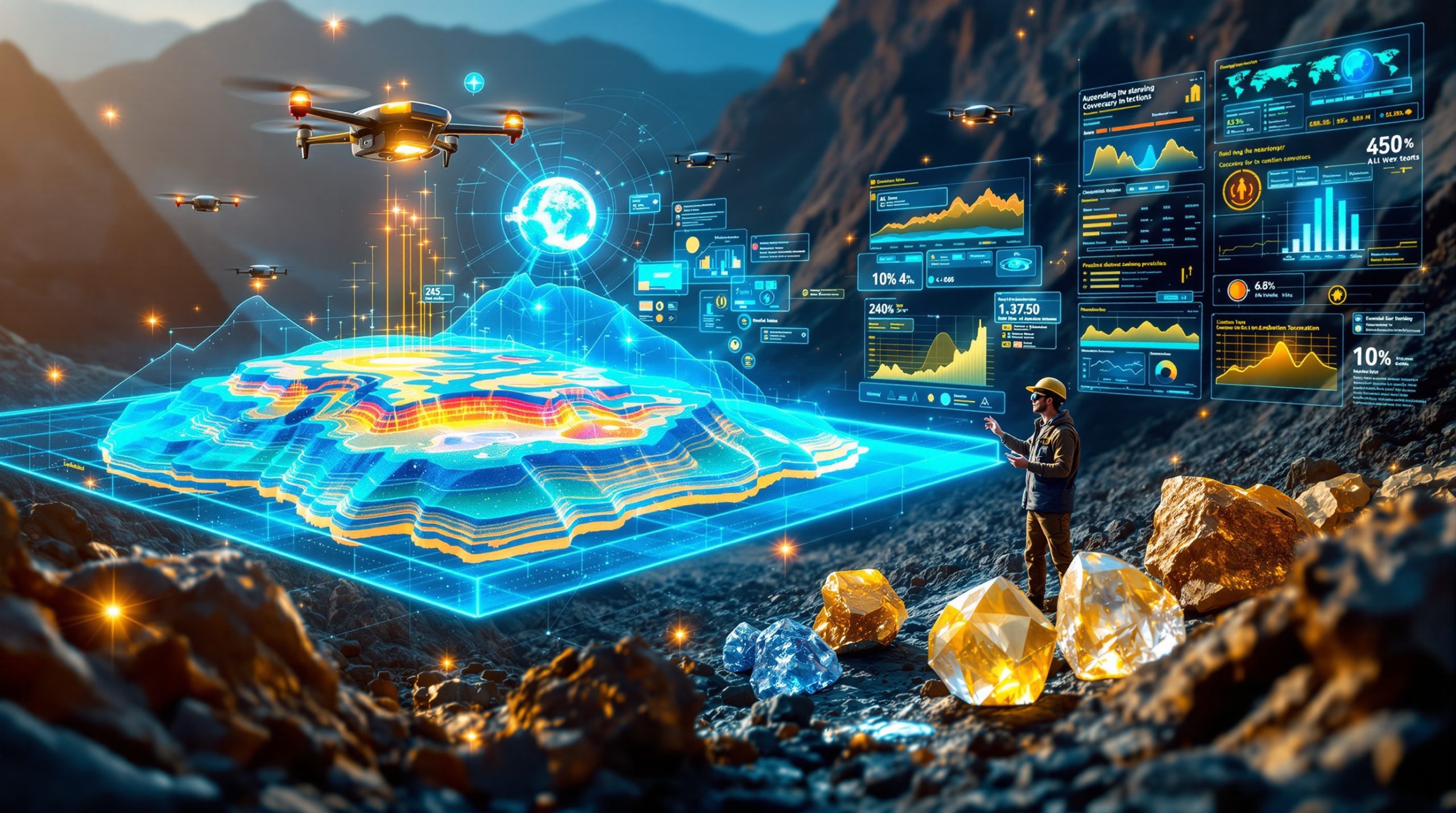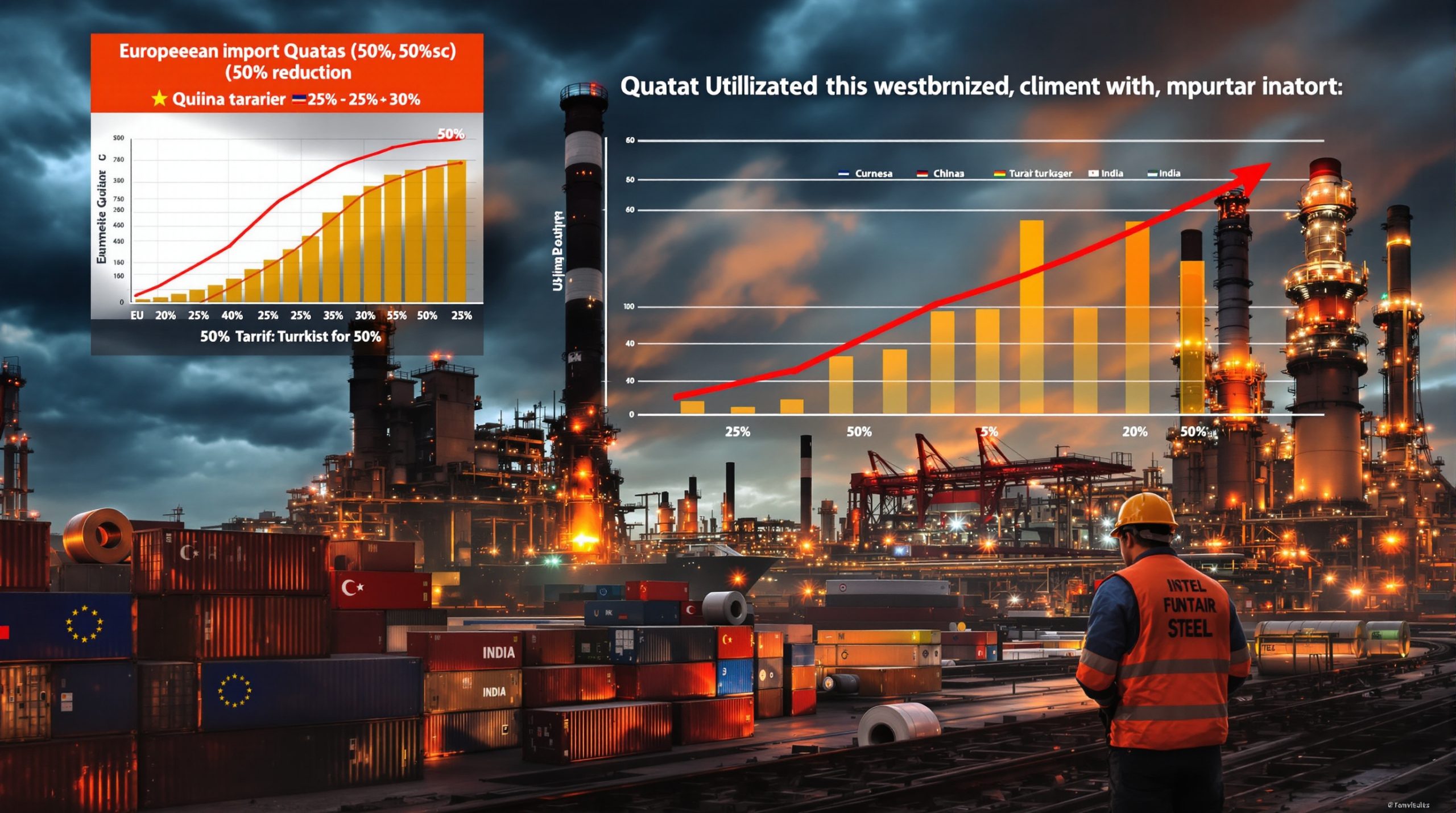The Evolution of AI in Mining Exploration: From Traditional Methods to Advanced Solutions
Mining exploration traditionally carries high risk with success rates as low as 0.5%. Capital-intensive processes have long been the standard, requiring significant investments before confirming viable deposits. However, artificial intelligence is fundamentally transforming how mining companies identify and evaluate potential mineral sites, creating a technological revolution that promises to reshape the industry's future.
Traditional approaches involving geological mapping, geochemical sampling, and geophysical surveys followed by expensive drilling programs are increasingly being supplemented—and in some cases replaced—by sophisticated AI algorithms that can process vast datasets with unprecedented speed and accuracy.
The Limitations of Traditional Exploration
Conventional mineral exploration methods face several significant constraints:
- Substantial time requirements and financial investment
- Consistently low success rates despite high expenditure
- Difficulty integrating diverse geological datasets effectively
- Heavy reliance on geologists' experience and intuition
- Considerable environmental impacts through extensive field activities
These challenges have contributed to a concerning trend: maiden resource announcements in Australia fell 41% in a single year, dropping from 77 in 2023 to just 45 in 2024, according to industry data. As Scott North from Kamoa Capital aptly observed, "Fewer swings of the bat mean fewer sixes."
Additionally, the timeline from discovery to production has extended significantly—now taking 40% longer than it did 15 years ago—creating further pressure on exploration teams to deliver results more efficiently.
How AI Transforms Data Analysis in Mining Exploration
The integration of AI in mining exploration and discovery represents more than incremental improvement—it's a paradigm shift in how geological data is processed, interpreted, and utilized to identify potential mineral deposits.
Advanced Pattern Recognition and Anomaly Detection
AI systems excel at identifying subtle patterns and anomalies in complex geological datasets that human analysts might miss. These capabilities include:
- Detecting mineral signatures across multiple data layers simultaneously
- Identifying geological structures associated with mineralization
- Recognizing subtle geochemical anomalies indicating potential deposits
- Comparing findings against known deposit models to prioritize targets
Modern systems can analyze hyperspectral imagery to identify specific mineral alterations associated with valuable deposits like copper porphyry, even in challenging areas with difficult surface conditions or vegetation cover.
Multi-Dimensional Data Integration
One of AI's most powerful applications is its ability to integrate diverse datasets simultaneously:
- Geological maps and cross-sections
- Geochemical sampling results
- Geophysical survey data (magnetic, gravity, seismic)
- Remote sensing imagery (satellite, drone, hyperspectral)
- Historical drilling records and production data
- Regional tectonic and structural information
This holistic analysis enables exploration teams to develop comprehensive geological models and identify high-potential targets that might otherwise be missed when examining data sources in isolation.
As industry expert John Forwood of Lowell Resources Funds noted, exploration challenges have intensified: "It's getting harder and harder for juniors to get drill permits, and it can take years and hundreds of thousands of dollars to actually be able to get drill access for a project."
Key AI Technologies Transforming Mineral Exploration
Several AI technologies are proving particularly valuable in revolutionizing how companies approach mineral exploration.
Machine Learning for Target Generation
Machine learning algorithms are revolutionizing target identification and prioritization:
- Supervised learning uses known deposits as training data to identify similar geological settings
- Unsupervised learning identifies natural clusters and patterns without predefined classifications
- Deep learning analyzes complex relationships between multiple geological variables
- Reinforcement learning optimizes exploration strategies based on feedback from drill results interpretation
These approaches have demonstrated success across various commodity types, from gold and copper to critical minerals like lithium and rare earth elements.
Predictive Analytics for Resource Estimation
AI-powered predictive analytics is transforming resource estimation by:
- Generating more accurate 3D models of ore bodies
- Predicting grade distributions with greater precision
- Quantifying uncertainty in resource estimates
- Optimizing drilling programs to maximize information gain
These capabilities enable mining companies to make more informed decisions about project development and investment allocation.
Computer Vision for Core Analysis
Advanced computer vision systems are automating and enhancing the analysis of drill core samples:
- Automated logging of lithology, alteration, and mineralization
- Consistent identification of mineral assemblages
- Quantitative measurement of structural features
- Real-time data integration with geological models
These technologies reduce human bias, increase efficiency, and provide more consistent results compared to traditional core logging methods.
Real-World Applications and Success Stories
The practical implementations of AI in mining exploration are already delivering tangible benefits across the industry.
Reducing Exploration Costs Through Precision Targeting
AI-driven exploration has demonstrated significant cost savings by enabling more precise targeting of drilling programs. Industry estimates suggest that AI in drilling could reduce discovery costs by up to 30-40%, representing potential savings in the billions of dollars annually for the global mining sector.
The value of these efficiency gains becomes clear when considering that in 2024, Australian discoveries included 494 tonnes of gold, 8.9 million tonnes of copper, and 7.8 million tonnes of rare earths—valuable findings that required substantial investment.
Accelerating the Discovery Timeline
The integration of AI technologies is compressing the traditional exploration timeline:
- Data processing that once took weeks can now be completed in hours
- Target generation is accelerated from months to weeks
- Drilling programs can be optimized in real-time based on incoming results
This acceleration is particularly valuable for critical minerals needed for the energy transition, where supply constraints create urgency for new discoveries.
Enhancing Environmental Sustainability
AI-powered exploration contributes to more sustainable mining practices by:
- Reducing the physical footprint of exploration activities
- Minimizing unnecessary drilling through better targeting
- Enabling more efficient use of water and other resources
- Supporting more precise modern mine planning to reduce waste
As Scott North observed, "Exploration isn't broken. It's just running on 20th-century software." By implementing AI solutions, companies can not only improve discovery rates but also address growing expectations for environmental responsibility.
How Mining Companies Are Implementing AI Solutions
Mining enterprises are taking various approaches to incorporate AI into their exploration workflows.
Building Internal AI Capabilities
Leading mining companies are developing in-house AI expertise through:
- Establishing dedicated data science teams
- Partnering with technology companies and research institutions
- Investing in proprietary AI platforms and tools
- Creating digital twins of exploration projects for scenario testing
These investments reflect the strategic importance of AI capabilities in maintaining competitive advantage in mineral discovery.
Leveraging External AI Partnerships
Many mining companies are also collaborating with specialized AI firms to accelerate their capabilities:
- Working with AI startups focused on mineral exploration
- Engaging with cloud computing providers for advanced analytics
- Participating in industry consortiums to share data and best practices
- Funding academic research in geoscience AI applications
These partnerships enable mining companies to access cutting-edge AI expertise without building all capabilities internally.
Challenges and Limitations in AI-Driven Exploration
Despite its promise, AI implementation in mining exploration faces several significant hurdles.
Data Quality and Availability Issues
The effectiveness of AI in mineral exploration depends heavily on data quality and availability:
- Historical exploration data may be incomplete or inconsistent
- Data formatting and standards vary widely across the industry
- Some regions lack comprehensive geoscience datasets
- Proprietary data restrictions can limit training datasets
Addressing these challenges requires significant investment in data collection, standardization, and sharing mechanisms.
Integration with Traditional Geoscience Expertise
While AI offers powerful analytical capabilities, successful implementation requires integration with traditional geoscience expertise:
- AI models must be developed and validated by experienced geologists
- Results require interpretation within geological context
- Field validation remains essential for AI-generated targets
- The most effective approaches combine AI analytics with human judgment
This integration represents both a challenge and an opportunity for the mining industry.
Regulatory and Social License Considerations
The adoption of AI in exploration also faces regulatory and social challenges:
- Regulatory frameworks may not yet address AI-driven exploration methods
- Communities may have concerns about data collection and usage
- Transparency in AI decision-making processes is increasingly important
- Skills gaps exist between traditional mining expertise and AI capabilities
Addressing these issues requires proactive engagement with stakeholders and investment in education and training.
The Future of AI in Mining Exploration
The trajectory of AI in mineral exploration points toward increasingly sophisticated applications and deeper integration with mining operations.
Emerging Technologies and Approaches
Several emerging technologies promise to further enhance AI applications in mineral exploration:
- Quantum computing could enable analysis of vastly larger datasets
- Edge computing may allow real-time AI analysis in remote field settings
- Autonomous exploration systems combining drones, sensors, and AI
- Generative AI creating synthetic geological models for training
These technologies could dramatically increase the speed and effectiveness of mineral discovery in the coming decade.
Integration Across the Mining Value Chain
The future of AI in mining extends beyond exploration to integration across the entire value chain:
- Seamless data flow from exploration through development and operations
- Real-time optimization of resource models during production
- Predictive maintenance of exploration and mining equipment
- Automated sustainability reporting and compliance
This integration will maximize the value of AI investments and drive industry-wide transformation.
How Can Mining Companies Prepare for an AI-Driven Future?
To capitalize on the opportunities presented by AI, mining companies need strategic approaches to technology adoption.
Strategic Investments in Data and Technology
To capitalize on AI opportunities, mining companies should prioritize:
- Comprehensive digitization of historical and current exploration data
- Investment in data governance and management systems
- Development of clear AI implementation strategies
- Creation of internal centers of excellence for exploration AI
These foundations will enable effective implementation of increasingly sophisticated AI solutions.
Building the Right Skills and Partnerships
Success with AI requires new skill sets and collaborative approaches:
- Recruiting data scientists with geoscience understanding
- Training geologists in data science fundamentals
- Establishing partnerships with technology providers and research institutions
- Participating in pre-competitive research and data-sharing initiatives
Companies that build these capabilities will be better positioned to leverage AI revolution insights for competitive advantage.
The Transformative Potential of AI in Mining Exploration
Artificial intelligence represents a paradigm shift in mineral exploration, offering unprecedented capabilities to analyze complex data, identify promising targets, and accelerate the discovery process. While challenges remain in data quality, expertise integration, and regulatory frameworks, the potential benefits in terms of discovery rates, cost reduction, and sustainability improvements are compelling.
As Scott North from Kamoa Capital insightfully noted, "The real opportunity is in using AI to stress-test our ideas. Imagine an algorithm that plays devil's advocate on a drill target, or re-reads decades of reports to spot near misses everyone else has forgotten."
The global context adds urgency to these technological advances. With US$95 billion of mining M&A announced or concluded in 2025 and A$15 billion of takeovers on the ASX in the first half of 2025 alone, industry consolidation is accelerating. Companies that successfully integrate data-driven operations will likely gain significant competitive advantages in identifying and developing the mineral resources needed for a sustainable future.
As North concludes, "The race won't be won by who drills the most metres. It'll be won by who gets data-ready, scales AI, and closes the discovery-to-production gap."
FAQ: AI in Mining Exploration
What specific AI technologies are most commonly used in mining exploration?
Machine learning algorithms, computer vision systems, predictive analytics platforms, and natural language processing tools for analyzing geological reports are the most widely adopted AI technologies in mining exploration today.
How much can AI reduce exploration costs?
Industry estimates suggest AI-driven exploration can reduce costs by 30-40% through more precise targeting, reduced drilling requirements, and faster data analysis, potentially saving billions annually across the sector.
Does AI replace the need for experienced geologists?
No, AI complements rather than replaces geological expertise. The most effective approaches combine AI's analytical power with the contextual understanding and field experience of trained geologists.
What are the biggest challenges in implementing AI for exploration?
Data quality and availability, integration with existing workflows, skills gaps, and regulatory uncertainties represent the primary challenges for companies implementing AI in mining exploration and discovery.
How is AI improving environmental sustainability in exploration?
AI enables more targeted exploration with smaller physical footprints, reduces unnecessary drilling, optimizes resource use, and supports more precise mine planning to minimize waste and environmental impact.
Ready to Gain an Edge in Mineral Discovery Investing?
Discover how the proprietary Discovery IQ model can alert you to significant ASX mineral discoveries in real-time, delivering actionable insights before the broader market reacts. Explore historic discoveries that generated substantial returns by visiting the Discovery Alert discoveries page and begin your 30-day free trial today.




